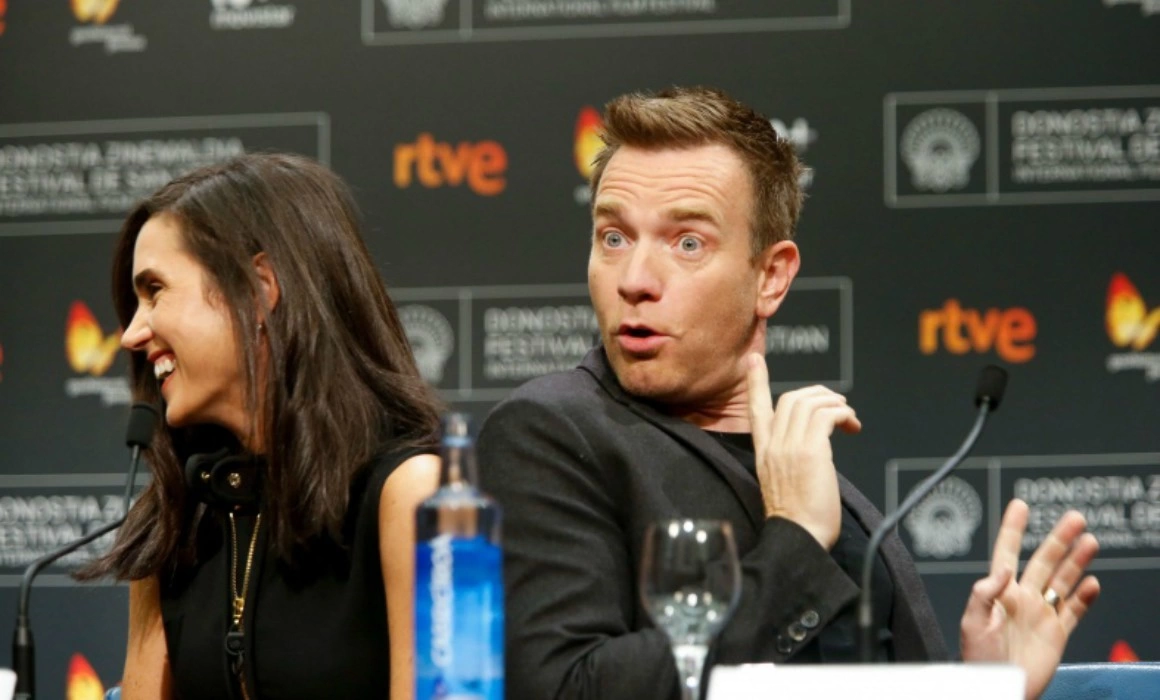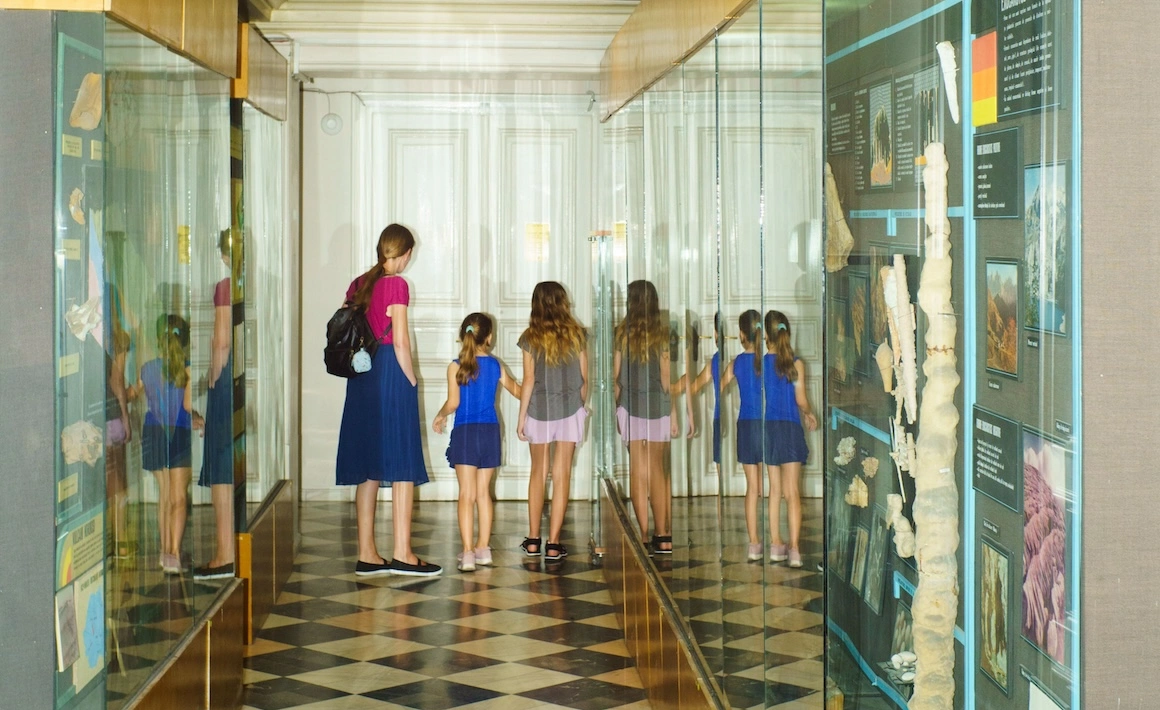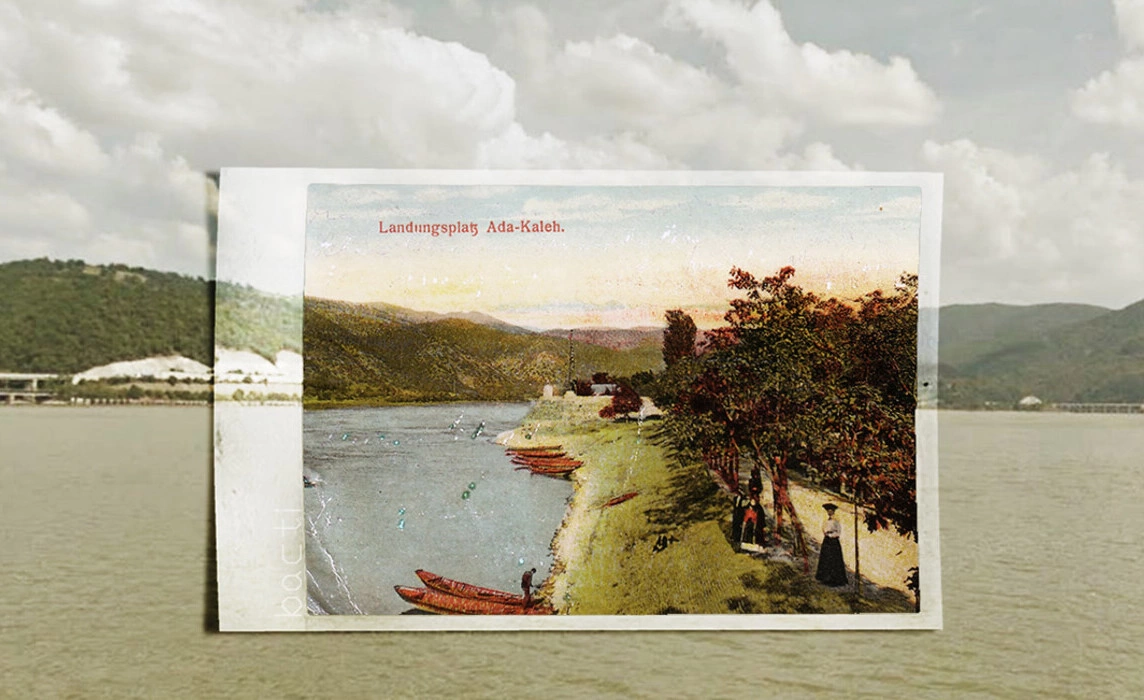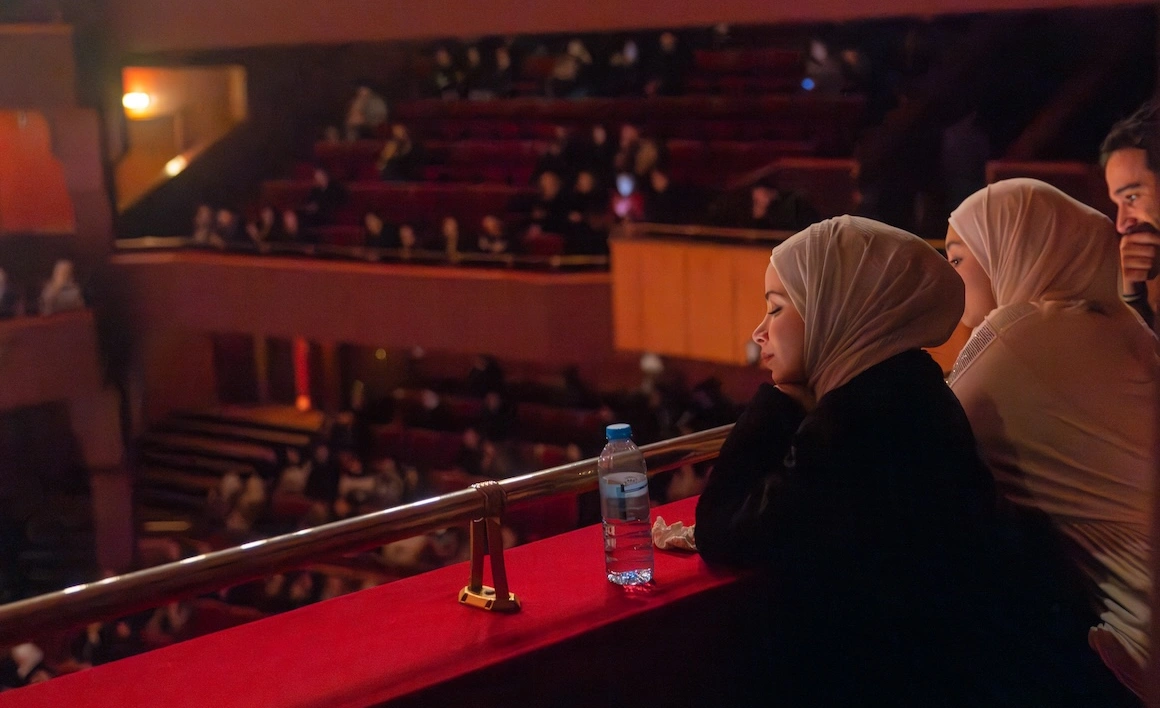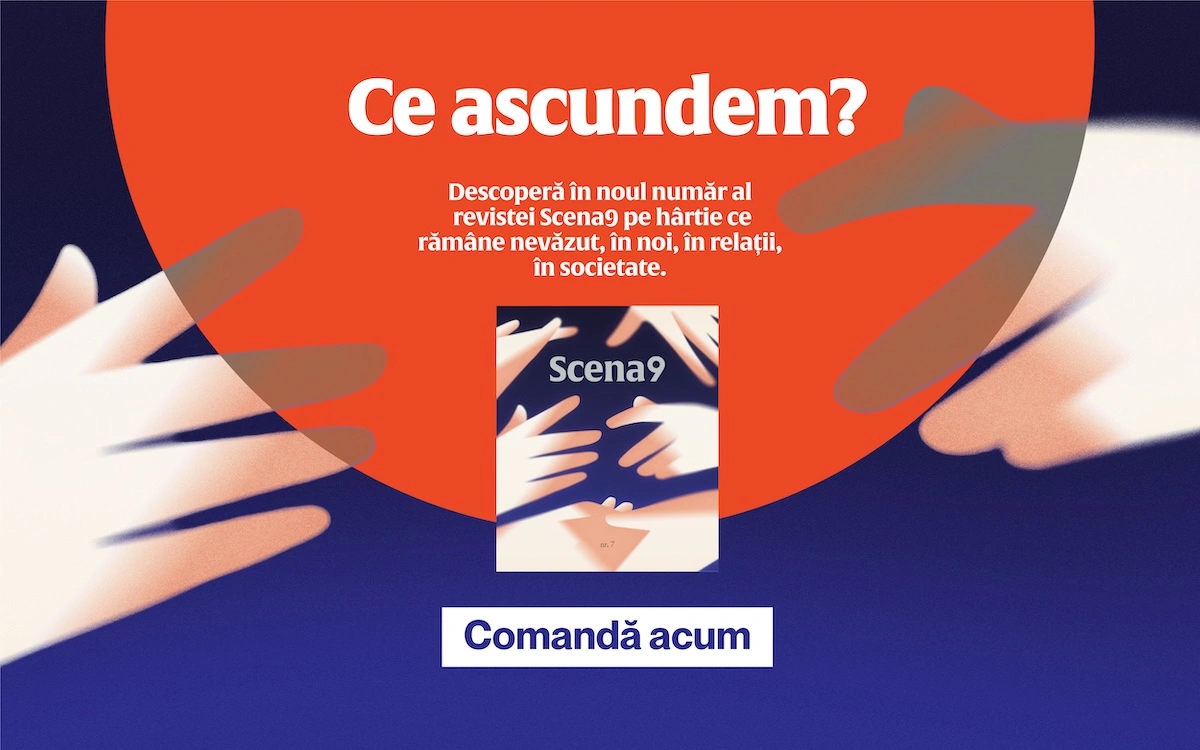Day#4 at the San Sebastian International Film Festival: McGregor addresses critiques of his adaptation of Roth’s "American Pastoral", dishes on Philip Roth and Trainspotting 2, and talks family relationships. Denis Villeneuve kills it with "Arrival", the adaptation of Ted Chiang’s The Story of Your Life, and France releases a drawn-out, albeit spectacular "The Odyssey", a biopic of Jacques-Yves Cousteau.
On day #4 at the San Sebastian Film Festival – Donostia Zinemaldia, I finally started to get used to things. Right as they were ending. Yes, it takes me a while to warm up, even when the whole place is basking blissfully in a soft, June-like glow. Case in point:
Everybody hates a tourist, don’t they? Well, #sorrynotsorry.
Aside from the fact that, by now, the bartender at the hotel bar knew how I take my coffee (long, black, is there any other way?) I’d also learned how to get around. The picture above is on my daily ‘commute to work’ (i.e. my half-hour walk by the beach from the hotel to the theaters).
Other insightful discoveries: I understand 91.7% of all spoken Spanish, but whenever I try to speak, people look at me like I’ve just been sent by Putin to colonize the Basque Country; ordering a glass of wine around here, color unspecified, automatically entails you’re getting red wine (well, duh); and finally, most jarringly, the elderly are active, out and about, and very much a part of the fabric of this town.
Admittedly, San Sebastian is a posh, bourgeois little resort that might strike some as boring—and I won’t discuss ideologies any further here. But, coming from a country where most elders in the capital cannot afford to go downtown (mostly because the bulk of their pension is spent on medication and food), this was uncanny to see. Here is this place of sun and 19th century palatial hotels, where elderly women are out on a weeknight having wine all by themselves; here is a place where they go to the beach, jog, and ride bikes. And I’m certain there is inequity lurking beneath this blissful veneer, but allow me the moment of celebration: it is possible to age and still be alive out here.
It is also possible to age as gracefully as Jennifer Connelly, I guess. But being a Hollywood actress to begin with might be a prerequisite.
Aging and coming of age, the evolution of man’s attitude toward the environment in the 20th century, and the collective evolution of the human race all featured prominently on day 4 of my stay in San Sebastian. Big, topical questions were on the menu: how does one start out on a life of comfort, but end up radicalized? If we’re not alone, how do we communicate with our friends out there, when they come to visit? And, finally, shouldn’t we rather try to protect the world, instead of conquering it?
American Pastoral. Ewan McGregor: “If Roth hadn’t liked the film, I would’ve felt like a failure”
At the press conference that followed the official screening of American Pastoral, most questions focused on Ewan McGregor’s first experience as a director. He first explained he was influenced by every director he worked with and had learned a lot from many—from some he says he learned what not to do. Some of his favorite directors to have worked with include Woody Allen, Roman Polanski, and Danny Boyle, but, he adds: “the thing about directing is there’s no one correct way, one single way that feels right” to do the job.
McGregor also said it seems to him “that directing could very much be about who you are as a person and where you put the focus. And I’m an actor, so I work from an actor’s point of view.” He wanted acting, not technical stuff to tell the story in American Pastoral.
Both McGregor and Connelly are parents: the actress has three children, whereas the actor-director is father to four girls. About the relationship in the film, between Swede and Merry, McGregor said he absolutely knows what that relationship is and can be. He found it interesting to discover such a beautifully observed relationship between a father and a daughter in Roth’s film, especially since the writer has no children of his own. McGregor said that if he had to direct a film about a father-son relationship, he would have to do it from the perspective of the son, because that’s the only one he’s known.
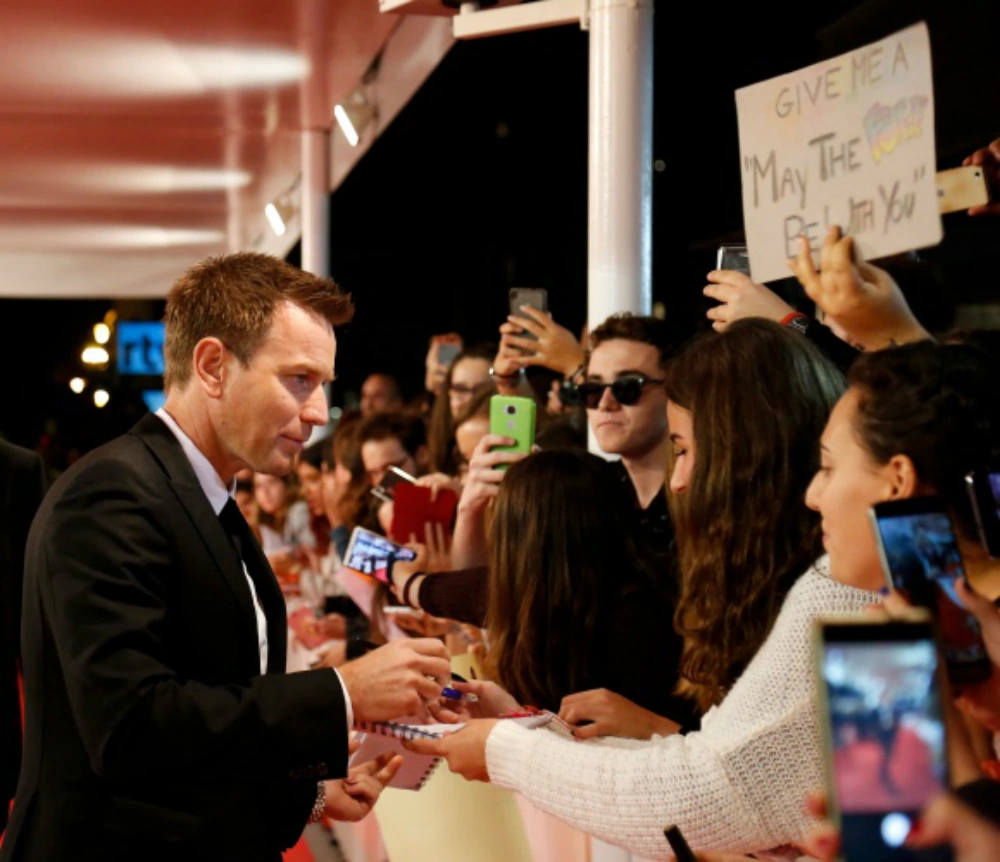
The actor-director added that while this is a story of a very extreme way to lose your child, he too has a daughter that has gone to college. “Perhaps why I was so attracted to this story is that he could be writing about that, Roth” – about the universal tale of teenagers pushing against their parents. McGregor had actually been attached to the script to play Swede long before taking over as the director, so he didn’t feel like he was casting himself. “It seemed like a very nice place to direct from”, he said and added he didn’t find it confusing at all. To him, it didn’t feel like two jobs, but a single, continuous one.
McGregor also recalled how driven he was to see this film completed. The whole process took three years, so there were times when he felt like it might not happen. As an actor, he explained, he was used to letting go some projects that were never realized, but didn’t want this to be the case with American Pastoral. Although McGregor “still” hasn’t met with Roth, he said the novelist sent a “very complimentary note” about the film a few weeks back. The actor-director realized how much that mattered to him. “If he hadn’t liked it, I would’ve felt like a failure.” (Notably, he says he never reads his reviews.)
McGregor was also asked about reprising his iconic character in Trainspotting, for the film’s sequel which was shot between May and August this year. On coming back to Edinburgh for filming: “It sounds a bit twee, but it felt like coming home (…) I’ve regretted the years we spent not working together, not because of specific films, but because I absolutely love working together,” he said about the cast, director Danny Boyle, and even some of the crew that returned for the second installment. While the actor did feel it was “intimidating to return to the character after 20 years,” and knew he was not the only member of the cast to think that, he said he was instantly taken back, from the first scene.
Actress Jennifer Connelly also spoke of her experience playing Swede’s wife, Dawn, whom she described as “someone searching for something authentic and something good.” And that, to Dawn, is Merry. Later, in Merry’s teenage years, “that rejection is so devastating to [Dawn], that when Merry literally and figuratively blows their lives up, I think Dawn is completely dismantled. She feels so bereft that she doesn’t know how to survive without it.” She makes the tragic choice of reverting to a previous version, beauty queen version of herself, which Jennifer Connelly doesn’t think Dawn ever really wanted for herself. Not out of a lack of love, the actress explained, but in order to survive. As a mother of three, Connelly says she cannot imagine the pain of the loss that Dawn suffers.
On working with McGregor as a director, Connelly said: “I feel like often, when I show up on a movie set, it’s about closing down options, narrowing things down.” What was great about this film for her was that coming to the set included completely private rehearsals “to open up options”. The notes taken down during those rehearsals were “like having an exquisite diary for my character”, which she referred to often during filming.
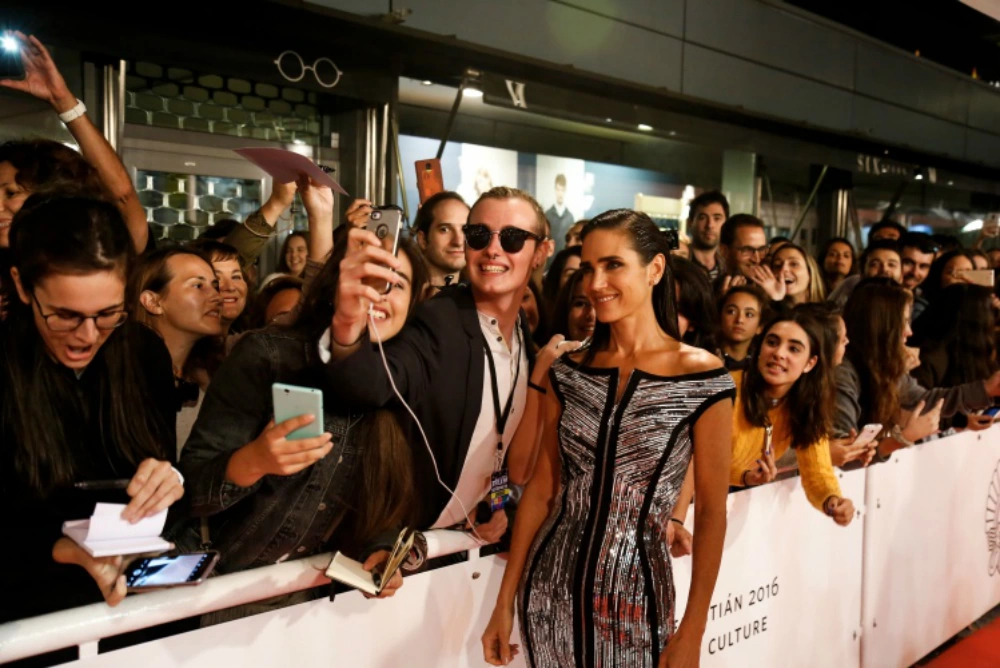
McGregor concluded that “Swede and Dawn embody the post-war American Dream”, Merry embodies the ‘60s anti-war sentiment, and the film was supposed to be about their family: the clash between those two embodiments. At the same time, the director also wanted this film to be about America, which is why it features bits of historic footage, such as those of the Newark riots in 1967.
As a Europe-born artist making a movie about America, McGregor said: “I don’t think our nationalities define or confine us in terms of what you can or can’t do.” He approached the story with a “hunger” to learn about that time in American history, beyond what he already knew about the Vietnam war, and from his own experience of living in the U.S. for several years. According to McGregor, perhaps the most important connection between the story in American Pastoral and present-day America is that of the racial riots: “we think we’ve moved on, but it seems we’re just going round and round.”
Arrival (USA, 2016. Dir. Denis Villeneuve)
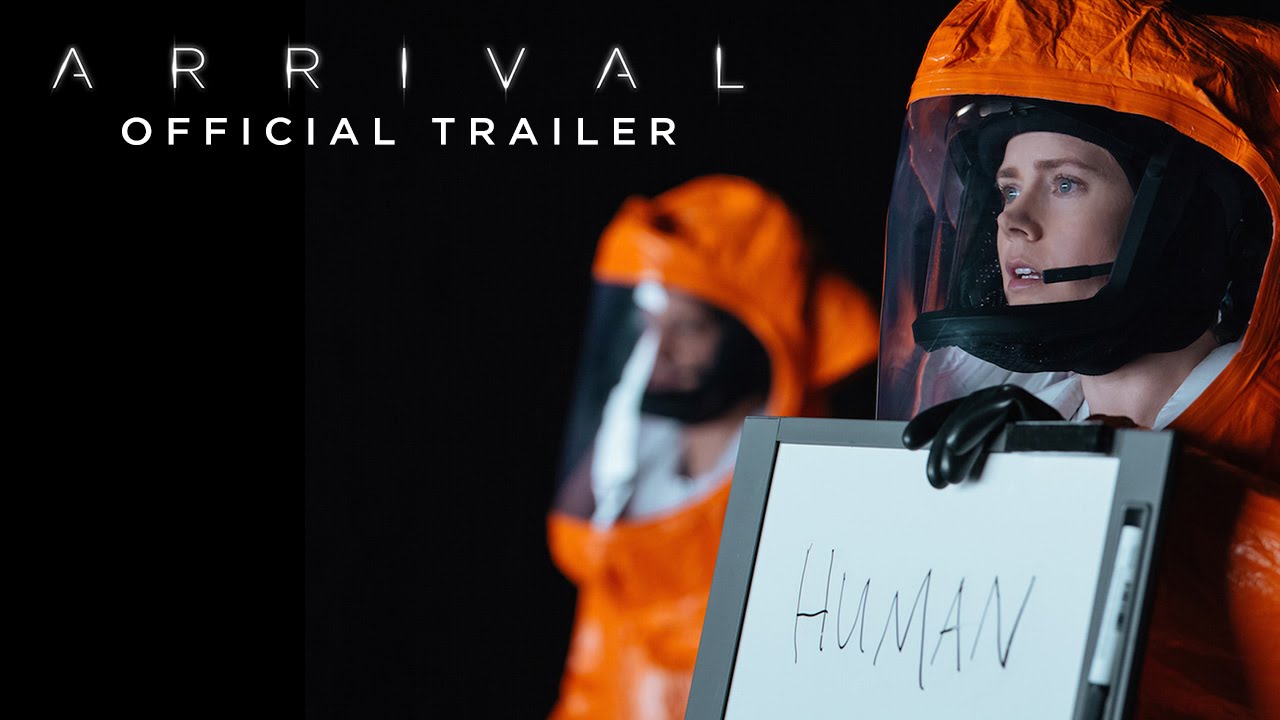
The Story: Based on The Story of Your Life, a sci-fi short story by Ted Chiang, Arrival tells the tale of Dr. Louise Banks (Amy Adams), a linguist summoned to help translate, and ultimately learn the language of visiting aliens. While Louise advances with her task, the world around her starts to fall apart at the hands of violence.
The Talk of the Town: Ted Chiang’s novella The Story of Your Life is something of a cult classic in the sci-fi niche—as is most of Chiang’s sparse body of work. This short story in particular consistently tops lists of the best stories ever written in its genre, so it will be interesting to see what fans make of Villeneuve’s adaptation. While Villeneuve’s film, set to be released in the US on November 11, has garnered an impressive roster of glowing reviews thus far, adaptations can be contentious territory in the sci-fi world. (As an aside, Villeneuve is a crossover critics’ darling, as his filmography thus far includes highly regarded titles the likes of Incendies, Prisoners, and the impeccable Sicario.) Still, Chiang’s achievements are at least as impressive, as he has only published some 15 titles in a 26-year-long career, but still scored several Hugo, Nebula, and Locus awards and nods.
The Good: Amy Adams, Amy Adams, Amy Adams. Alright, let me say that again: Amy Adams. Her performance of cerebral, yet vulnerable Dr. Louise Banks is, pun intended, stellar. If anything, one can only ‘reproach’ her with outshining the rest of the cast by light years. However, Arrival doesn’t leave the viewer much time to think about faults and shortcomings, as it is visually breathtaking: check out the trailer and poster to get a feel of the imaginative set design and cinematography. And hold your breath to see those aliens emerge and communicate with Dr. Banks. The script does a scarily believable job at showing what might happen on Earth, should humans get a visit from ‘friends’ up above. Finally, bonus points for the spectacular soundtrack—sample follows below.

The Bad: Full disclaimer: I have recently read and loved Chiang’s novella. And, as I expect other readers to note, the film allots a bit more space to secondary themes in the text, while some of the main ones are relegated to the secondary plane of the movie. I’ll leave it at that, since saying anything else would be a spoiler, and I want to keep my conscience clean. Besides, I’m from the school of thought which says movies and books are different animals: the film adaptation of a literary work needn’t be exact, in order to work. That having been said, Arrival does, at times, feel a bit too abstract and talk-y for its own good. Bear it out, the movie will reward you for your intellectual efforts when all is revealed at the end.
The Verdict: Go see Arrival. It’s as simple as that. Go if you’re a sci-fi freak, but go especially if you aren’t. Go if you’re into science. Go if you think language is a fascinating notion. Be prepared to do some intellectual work, in accompanying the scientists in their journey to decipher alien language. But be sure that you will get your money’s worth, at the end of the movie’s 116 minutes.
The Oddyssey. Jérôme Salle: “Cousteau played at seduction”
At the press conference following the film’s official screening, on the closing night of the festival, director Jérôme Salle took the lead in answering the journalists’ question about who Jacques-Yves Cousteau really was. One member of the press, for instance, described the iconic explorer as a mild-mannered man; Salle responded: “JYC never raised his voice, you’re right. He’s a guy who played at seduction, but I’m not sure he was very nice. He was very charismatic, indeed. (…) [But] he was very harsh with the people who were around him—especially with his family”. Sale added that, in researching Cousteau’s biography, he came across two schools of thought. There were those who regarded the man as a demi-god, and those who didn’t shy away from calling him a pig. “There was no half-half”—which is why Salle’s intention was to create a balanced portrait.
Lambert Wilson chimed in with his own view of Cousteau as a world-wise charmer: “He looked at you like he could take you the end of the world. (…) He always tried to seduce everyone, men and women.” However, Wilson added, Cousteau was also a man who couldn’t handle conflict, which the actor defined as a weakness. Salle added Cousteau was very courageous, but, as far as relationships go, he did lack character. In Wilson’s view, his wife, Simone, was stronger one. Salle confirmed this perspective: “She was the great sailor. I think, should she have been born 50 years later, she would’ve realized her dreams on her own, without being in his shadow.”
Several questions from the press concerned the filming conditions of this ambitious biopic. Salle stated the issues were pretty much the same ones Cousteau faced: visibility underwater is very low, and the presence of fog posed additional problems. An unexpected problem the crew ran into was to recreate the biodiversity of the the Mediterranean after the war, in the ‘40s. In a sense, this is a paradise lost nowadays: many species fish that lived there at the time don’t even exist in reservations anymore, so they had to be CGI-ed. And this, of course, only served as a stark reminder on the depletion of biodiversity.
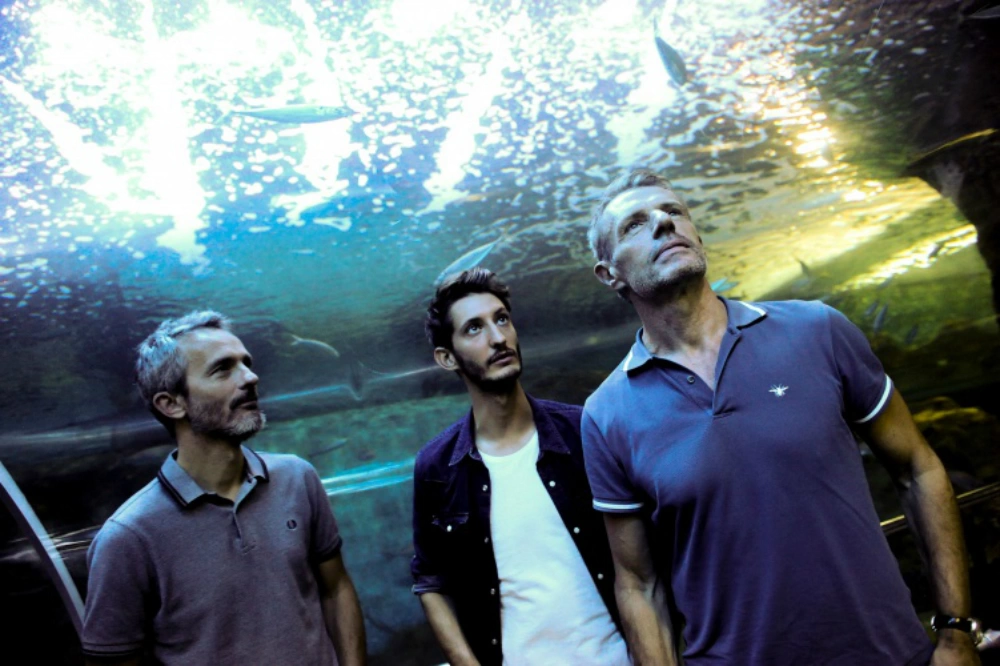
Salle added that, while his goal was “to make the most natural film possible”, in a situation like that, they had no choice but to use computers. All in all, the director believes, he was very upfront to his crew about the conditions in which they’ll be filming. He told everyone right off the bat they really were going to go to the Antarctic, in difficult weather conditions. Yet Salle doesn’t want to complain: “Yes, it was harsh, with a lot of wind, but going to shoot there and to live there—it was a gift.”
An issue which was quickly surmounted was that the film’s two lead actors had never done scuba diving before. Luckily, they turned out to be naturals. Pierre Niney, who plays Cousteau’s prematurely deceased son, Philippe, said it was “so particular to be underwater, especially for the very first time. It’s very meditative, what with the lack of gravity, and it creates a very powerful bond between the divers.” Scuba diving did this for Niney and Lambert, which explains why the latter echoed the former’s view. “When you’re an actor discovering a character, you’re very theoretical about it. You discover things with your mind, but then it has to go through your body.”
In a sense, all three members of the team behind The Oddyssey spoke of diving as the thread that binds the film. As the film is an effort to reflect Cousteau’s esthetic, having actors who could dive elegantly was just as important for the movie, as it was for JYC. This doesn’t mean their diving experiences during filming were unadventurous. Lambert recalled that in South Africa, the water was very cold. Salle and Niney said the scene of the chance encounter with a whale was perhaps their biggest letdown, as it was next to impossible to spot one in its natural habitat. However, after they’d shot the film, whales did come out to swim with them in South Africa. Salle also made it a point to say the shark scene was completely real, as Pierre Niney actually did dive with them in the Bahamas.
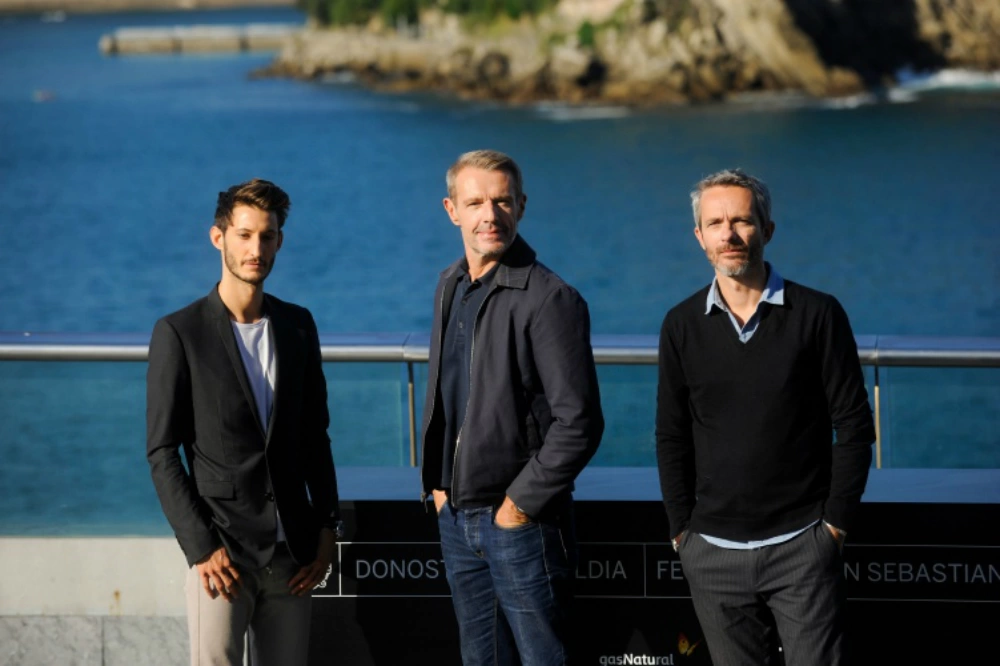
All in all, Salle says his intent was to talk about a lost paradise of sorts. He views Cousteau as the paragon of the western male, who first wants to conquer, but eventually ends up destroying (parts of) the world. According to the director, JYC represents “the evolution of man vis-a-vis the environment in the 20th century.” Born in 1910, when there was no electricity, Cousteau “had a blind faith in progress and evolution”—the very things which ultimately failed him. As he learns from his son in the film, man has to stop being a predator, lest he destroy the world.
In what concerns the relationship between the team of the film and those who knew the real Cousteau, Salle said that, for instance, he was “very fortunate to meet Bebert”, Cousteau’s right hand man, before he died. But with respect to the Cousteau family, Salle strove to keep his independence. “If I had to talk with the family, it would’ve been near suicide for me, in terms of my artistic independence.” So he approached them all at once, at the end, and told them he has no intention to harm them. He gave them the script and all the notes and some provided feedback. L’Odyssée was recently screened in Marseille, in the presence of several who knew Cousteau—and they were all very moved and crying. “Biopics are always complicated, especially when the people involved are still alive,” said Salle.
L’Odyssée (France, 2016. Dir. Jérôme Salle)

The Story: This is the story of the life of Jacques-Yves Cousteau, from his airplane accident which made him turn to diving, to meeting his life-long partner, Simone, the birth of their two sons, his rupture with Philippe, their reconciliation, the latter’s tragic death, and his travels across the oceans of the world.
The Talk of the Town: With The Odyssey still awaiting its theatrical release, critic reviews are still scarce—everyone seems to be holding their breath for this blockbuster, especially in France. And while the handful of international critics have (with great reserve, to be fair) expressed some misgivings about several shortcomings of the film, the French ones seem to be raving already (link in French).
The Good: The underwater shots are nothing short of breathtaking. Two to watch out for: a chance encounter with a whale and a brave effort to film a group of sharks. All in all, production value, from the reconstructed Calypso to the period costumes and set design, from the make-up to the cinematography, is top-notch.
The Bad: While the makeup and prosthetics that carry Audrey Tautou across several decades in the life of Simone (Cousteau’s wife), this in itself detracts and distracts from the character. Ironically, Simone is possibly the best written, most complex part in the film. While the charismatic Pierre Niney easily acquits himself of the not-too-daunting part of hippie-ecologist-Christ-like Philippe, not the same can be said of Lambert Wilson. The English-speaking actor is an uncharismatic, forgettable Cousteau, who simply courses from one point in the plot to the next. Truth be told, this might be the film’s biggest flaw: it purports to pull the proverbial pedestal out from under an iconic figure, when, in actuality, all it does is depict an inconsistent, inexplicably liked man, and the family that bore the brunt of his angst and megalomania.
The Verdict: If you grew up with JYC, his Calypso, his marine life documentaries, and his crew of red caps, this movie might elicit some forlorn nostalgia. And if you’re French/grew up heavily exposed to French TV culture, all the more so. However, for most other audiences, the movie might be best skipped. It is visually impressive, but falls short on plot and character complexity: the essential point on how tangible the realities of climate change are in particular remains mired in a drawn-out, bi-dimensional homage. The film’s narrative, which raises an obstacle in the way of its hero in one scene and demolishes in the very next one, does nothing to prove why young viewers today should care about Cousteau.
Main photo: Jennifer Connelly, Ewan McGregor. Photo: Gorka Estrada, for San Sebastian International Film Festival.


